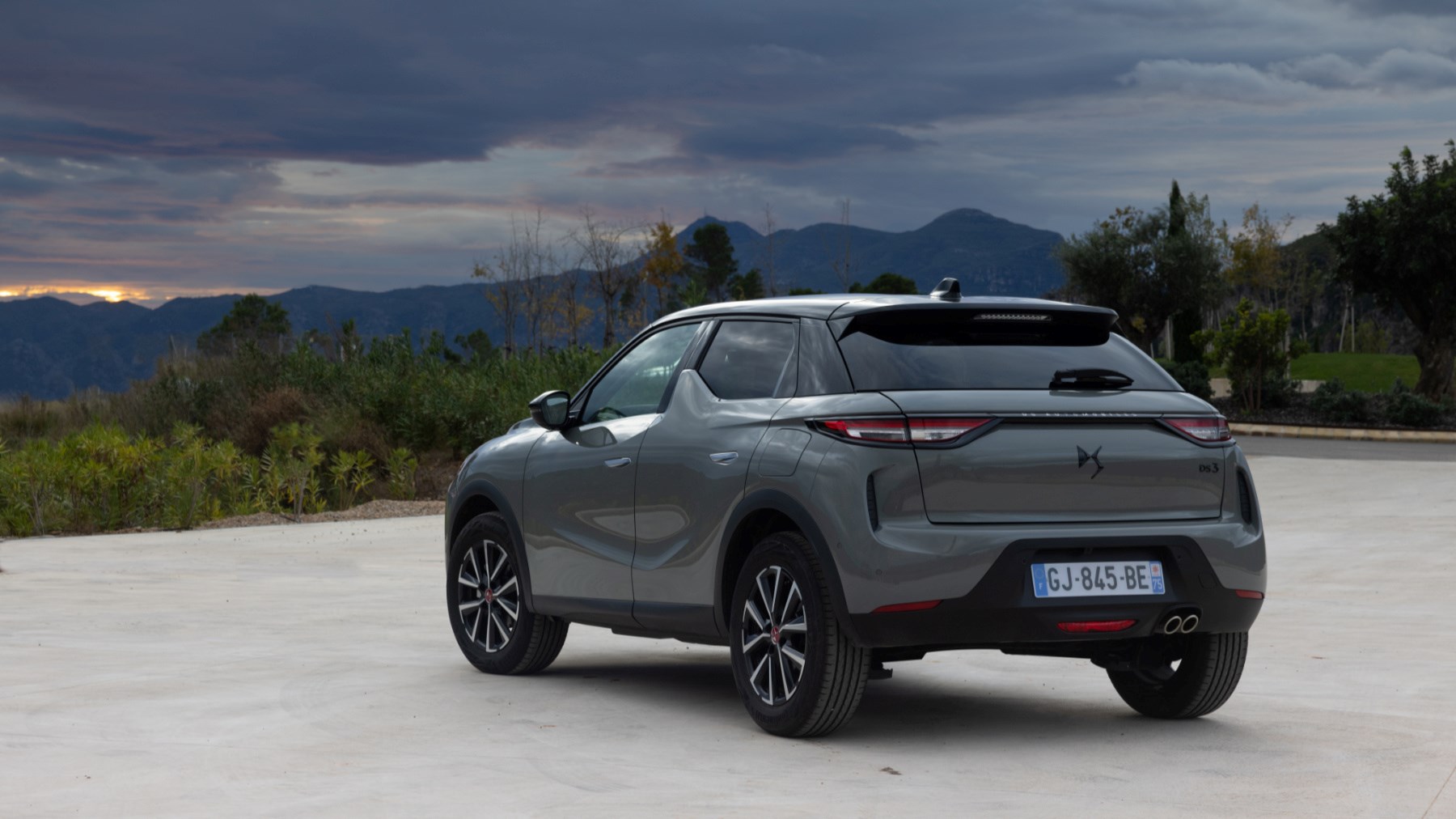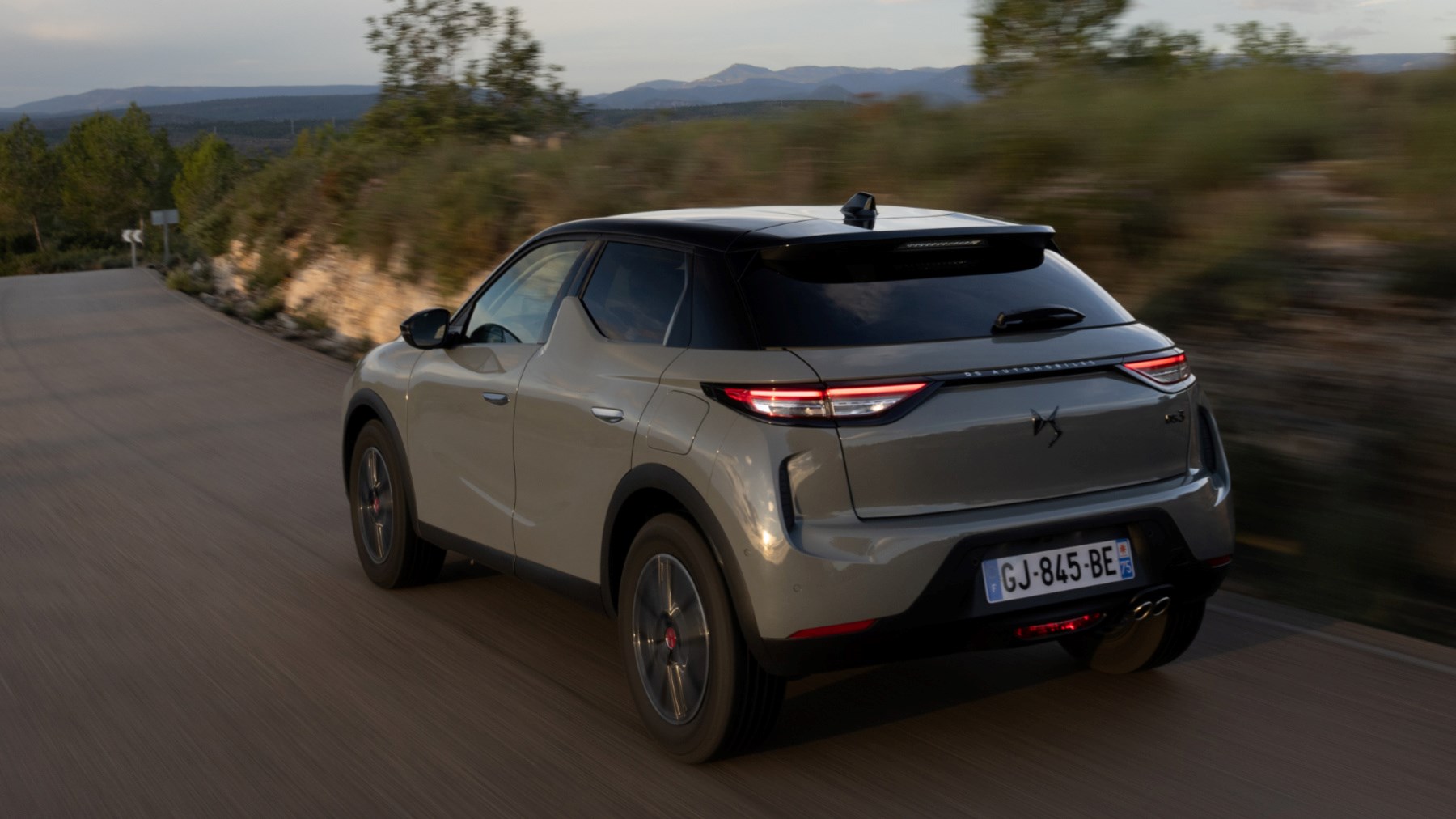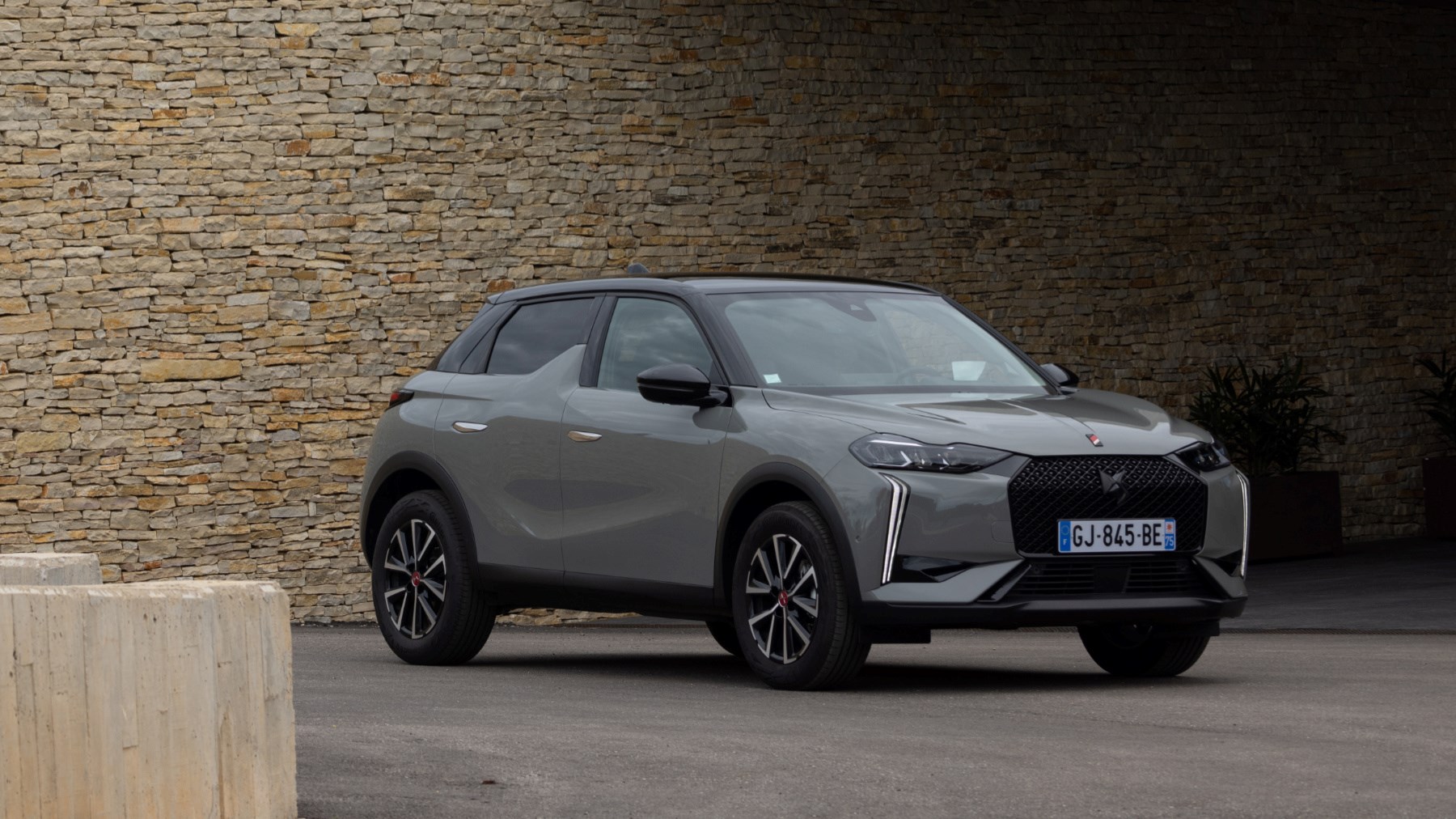- DS’s small SUV loses Crossback name
- Gains minor updates
- Still hard to recommend
We won’t get into the electric versus combustion debate here for fear of our comments section imploding. But there’s no escaping the fact that as a consumer item, the DS 3 E-Tense is better than this DS 3.
This new model (nee DS 3 Crossback) is flawed in a number of ways (as you’ll find out),, some of which are fixed simply by turning to electricity instead of combustion.
So, is this a new model?
Before we get too ahead of ourselves with negativity, we should say that the DS 3 is an okay mini SUV. Good even, if you care more about interior space than practicality or driving fun.

This new DS 3 is essentially a facelift. There’s a new nose, flashier infotainment setup and some new wheel/colour combos.
What’s it like to drive?
It does comfort supremely well. Motorway speeds are where it feels most at home, filtering harsh vibrations away from your bum. Below 30mph it can sink and rebound into potholes in a jarring way, but this probably wasn’t helped by the 18-inch alloys on our test car.
You’ve only one choice of engine (a 1.2-litre petrol) but it comes in two states of tune. The 100 model comes with manual and automatic gearbox options, while the 130 is only available sans clutch pedal.
We’ve only driven the 130 and can report it’s fine in day-to-day driving. The tickbox 0-62mph sprint is filed in 9.2 seconds, which is about right for this sector. Importantly motorway work doesn’t feel like a chore, the automatic ‘box keeping things ticking over nicely at these speeds.

It’s somewhat let down by the eight-speeder in other areas though. Around town it’s hesitant and there can be a bit of a lag when slowing down and speeding up, for instance, at a roundabout. In Sport mode it’s the opposite, far too keen to shift a cog down for no particular reason other than to jerk you round in your seat. In this configuration the steering also becomes weightier, but there’s no gain in feel.
Show it a set of bends and it’ll steer true. The traction control system is rarely bothered by the 128hp on offer and you can get a bit of lift-off oversteer. But it’s not joyful to drive.
Do DS 3 owners care? Probably not. It’s easy to plot a course through thick traffic and it’s silky at motorway speeds. Job done.
Interior looks good
The interior is good. The steering wheel is lifted straight from a DS 4 and other bits are from the wider Stellantis group. But it mostly feels soft and luxurious and works well. The seats are wide and comfortable, although you don’t sit all that high up.

The new infotainment is easy to use and pin sharp. It’s a 10.3-inch screen, so not Mercedes hyperscreen-like, but good nevertheless. It’s tasteful, even.
Unfortunately the climate controls are on it too. Yes, there are diamond shaped shortcut buttons, but ultimately it’s still fiddling on a screen.
Practicality
Up front there are no complaints. There’s enough room so you’re not bumping elbows with the passenger, there’s space for odds and ends, wireless phone charging and headroom is good too.
The rear isn’t so great. Six footers in the back won’t want to sit behind six footers in the front, and the “shark fin” rear windows ultimately compromise the light coming in, making it feel dark and close.
Thick pillars make it hard to see out of, and the boot isn’t the biggest in class. Quite the lip too, making it harder to load heavy items in there.
Verdict

Cars that share ICE and electric powertrains are often compromised in terms of packaging. Normally the recommendation would err in combustion’s favour, but in a car lacking in practicality anyway, the E-Tense is a much better bet. Well, assuming you can get on board with the electric charging and the fact that it’s about £7-10k more expensive depending on spec.
The petrol 3 wears its negatives on its sleeve. It’s not that practical, the rear is cramped, the boot is small and it’s also pretty expensive. The same can be said for the E-Tense, but that doesn’t have the annoying gearbox and is quieter, quicker and more serene to drive.
The design is lovely, though, and if you’re more sold on interiors and dealership experiences then it might be worthy of consideration. If you’re after a pragmatic small SUV, this isn’t it.